- Administrator
- Albums and Singles

The high-days and holidays of the agrarian year mean little to many of us today. Estranged from the natural world and its solar cycle, we too often encounter such dates only as decorative names in the lifeless pages of pocket diaries and year-planners. Yet these occasions were deeply significant to our long-dead forefathers, who daubed each with a variety of vividly coloured customs, rites and rituals. The Folklore Tapes Calendar Customs series explores this heady world of seasonal symbolism creatively, through research and artistic reinterpretation.
The Folklore Tapes Calendar Customs boxed set recounts the adventure so far, taking its listener on an arcane journey reeling around the four corners of the ritual year. With Merry May, we encounter the dances, games and fertility ceremonies that once greeted spring and the returning bounty of the soil. Pulling on our Crown of Light, we join the fires, feasts and fairies of Midsummer, with a full-swelled sun casting its enchanted energies around us. At the borderline festival of Samhain we bestride the threshold among the wandering spirits and tricksters that stepped this night Fore Hallowe’en. Our voyage spins to a close at the year’s end with Midwinter Rites and Revelries, where, clothed in evergreens, we forecast the sun's rebirth beside ceremonial flames.
For these compilation albums, each contributing artist researched a specific seasonal custom and, informed by their findings, conjured a sonic movement in response. The pieces are a magnetic assortment of sound collage and foley work, composed music and augmented field-recording. The release documents the Folklore Tapes group as it has evolved to be: a variegated host of musicians, storytellers, sound designers, academics and performance artists united by their desire to get off-the beaten-track in the eerie hinterlands of folk memory. These are playful retellings of long-forgotten observances; library sounds, carried forth on a wisp of smoke from the bonfires of ages past.
The works are presented here on vinyl for the first time in remastered audio (each was originally released – and soon sold out – as a cassette album between 2014 and 2016). Accompanying the records is a horde of precious items: a photogram print, a set of four postcards featuring the original cassette release artwork, and a detailed booklet comprising illustrations, research notes and an in-depth seasonal customs essay. These treasures are housed in a hand-numbered and stamped litho-print box, published in a limited edition of 250.
More information can be found at Folklore Tapes.
Read More
- Administrator
- Albums and Singles

Those not familiar with Bryn Jones' style, will listen slack-jawed at the sheer anticipatory nature of his sound collages. The five lengthy tracks of Mullah Said are based on hypnotic and somewhat menacing grooves: a repetitive dub bass beat, waves of Middle Eastern strings and voices, layers of building hand percussion. Each track is respective but the washes of sound/percussion come and go often creating a sense of motion and change. All of the tracks are similar and even share elements. Mid-East tension is so accurately captured through the use of the regions instrumentation (especially percussion), sinister electronics, samples of men chanting, women crying, sounds culled from the horrors of war, and occasional angry distortion that the listener's listener will be transported to the belly of the beast.
Mullah Said displays two aspects of the work of Muslimgauze. Firstly, musically, it is in the delightful drifting ambient vein. The percussion is mainly acoustic hand drums - providing a rhythm of aural features - the trademark shimmering string sound heard on a number of releases is much in evidence, rhythms are generally slower, there are lots of samples of people speaking in conversation, markets wherever. "Mullah Said" opens the disc with the lovely mix of these sounds. "Every grain of Palestine sand" continues the mood, with a slightly faster tempo, and more emphasis on the beat. But it soon locks into a mesmeric lassitude as various effects echo or smear the sounds, drums come in for short moments, different string sounds enjoin the play. "Muslims Die India" follows the mood though the voices seem darker, sadder, and then comes "Every Grain of Palestinian Sand" followed by "Muslims Die India." Yes - not a typo, these tracks are repeated. Muslimgauze trend - to remix himself. Prime Muslimgauze Middle Eastern ambience - if you like that side you will love this album. The final track is short and different, a crackling ground over which a singer chants a song interrupted by machine-gun percussive bursts - "An end.""
Out January 2018 on Staalplaat.
Read More
- Administrator
- Albums and Singles
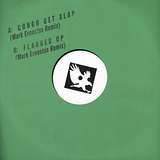
"Whaaaa? Mark Ernestus vs Equiknoxx?? Two killer, extended remixes on this limited, hand-stamped whitelabel - containing perhaps the most Basic Channel-esque production from Ernestus in a decade.
Mark Ernestus dubs Equiknoxx to the moon and back for DDS with an irresistibly percolated take on "Congo Get Slap" backed with a jaw-dropping, Basic Channel-style version of "Flagged Up." We hardly need to stress that this one’s a doozy.
As a big fan of Equiknoxx’s teched-out take on up-to-the-second dancehall, it was perhaps inevitable that the venerable Ernestus, owner of Berlin’s Hardwax and one-half of the legendary Basic Channel and Rhythm & Sound, as well as his most recent work with the brilliant Ndagga Rhythm Force, would eventually cross paths with Jamaica’s Gavsborg and Time Cow, two of the most exciting producers to emerge from JA this decade.
On both remixes the past informs the present in timeless fashion. The cloud-bursting chords and spaghetti western-esque tropes of Equiknoxx’s "Congo Get Slap" are deftly diffused in the echo chamber, giving the bass an elasticated recoil and sublimating the chords to scudding, skywards dabs with weightless effect for the dancers.
Flipside, Ernestus takes that aspect one step further, distilling the kinetic dub futurism of "Someone Flagged It Up!!" into a maze of diaphanous dub chords and rolling, sunken subs that inarguably measures up among his strongest post-Basic Channel works.
Like Shackleton’s dub of "The Stopper" by Cutty Ranks for DDS, the results here triangulate deep-rooted connections between Jamaica, Lancashire and Berlin, speaking to a mutual respect and reverence of style and pattern which has heavily resonated from sub-tropical Kingston into much colder, European climes over successive generations."
-via Boomkat
Read More
- Administrator
- Albums and Singles
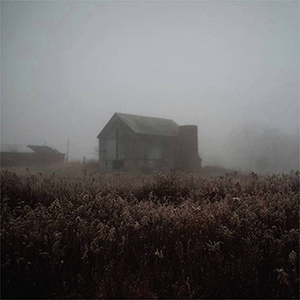 Following up an excellent collaboration with Mike Shiflet in 2015, John Kolodij’s latest release as High Aura'd is a further expansion and refinement for his niche carved out in the realm of doomy ambience and electronic experimentation tinged with a hint of folk Americana. Presented as beautifully as it sounds, No River Long Enough Doesn't Contain a Bend is the right balance of familiar and innovative sounds that are combined expertly.
Following up an excellent collaboration with Mike Shiflet in 2015, John Kolodij’s latest release as High Aura'd is a further expansion and refinement for his niche carved out in the realm of doomy ambience and electronic experimentation tinged with a hint of folk Americana. Presented as beautifully as it sounds, No River Long Enough Doesn't Contain a Bend is the right balance of familiar and innovative sounds that are combined expertly.
The first few songs of the album are the ones where it is not hard to hear the influence and commonality with other artists.The brief opener of "Burnt Hills" is a well crafted pairing of fuzzed out and clean acoustic guitar, channeling later period Earth and early Horseback.This continues into "Black Grasshopper," with its rural folksy sound mixed with an approach veering nicely into the world of noise and electronics.It is all well and good, but perhaps a bit too familiar to me.
After this the overt similarities to other projects begin to peel away and Kolodij's own touch is more prominent."Remain in Light," with vocals by Glenna Van Nostrand (albeit heavily processed) is drastically different from its onset.An electronic-centric opening gives a nice digital luster to the open mix, as Kolodij weaves in threads of droning, heavy electronics and squalling guitar.This is a continual process and culminates in a wonderfully dense and weighty conclusion.For "All the Spirits that Dance" he works with a similar technique, building from a sparse opening into a fuzzed out ambient blur that peaks and quickly retreats into an abrupt conclusion.On a song like "Hodge’s Lament," Kolodij transitions the guitar back into focus, but instead of rural acoustic plucking, its in the form of a big doom dirge.The balance is carefully struck between guitar and electronics, and that is exactly what makes it a highpoint of the record, as does the carefully built-up dynamics and mix."Spivey Point" is another bleak masterpiece, lurching on depressive chords and nicely accented by a creepy piano section.
The twangy sound reappears on both "Red West" and "Iridescent Grasshopper," but with a bit more of an idiosyncratic edge.For the former he once again merges the acoustic guitar with its processed, electric counterpart, but the evolving dynamic between quiet and loud is a major asset.On "Iridescent Grasshopper," the additional drumming provided gives it a greater sense of depth and variety.For the concluding "Red Rocks," Kolodij enlists the help of Angel Olsen on vocals and Greg Kelley's trumpet.It continues that funeral atmosphere from "Spivey Point," but that song’s odd open mix and disquieting ambience is fleshed out more with Olsen’s upfront vocals.With that, the trumpet, and more bizarre, less identifiable sounds, the album ends on a particularly spectacular note.
At first listen No River seemed a bit overly familiar, however a further listening (and a deeper one later) revealed the album to be more distinct. While the music may share some general commonalities with other artists, John Kolodij's work is its own beast entirely.His juxtaposition of light and dark tones (through acoustic and electronic instrumentation) through each of these 10 songs makes for a beautifully bleak record.
samples:
 
Read More
- Administrator
- Albums and Singles
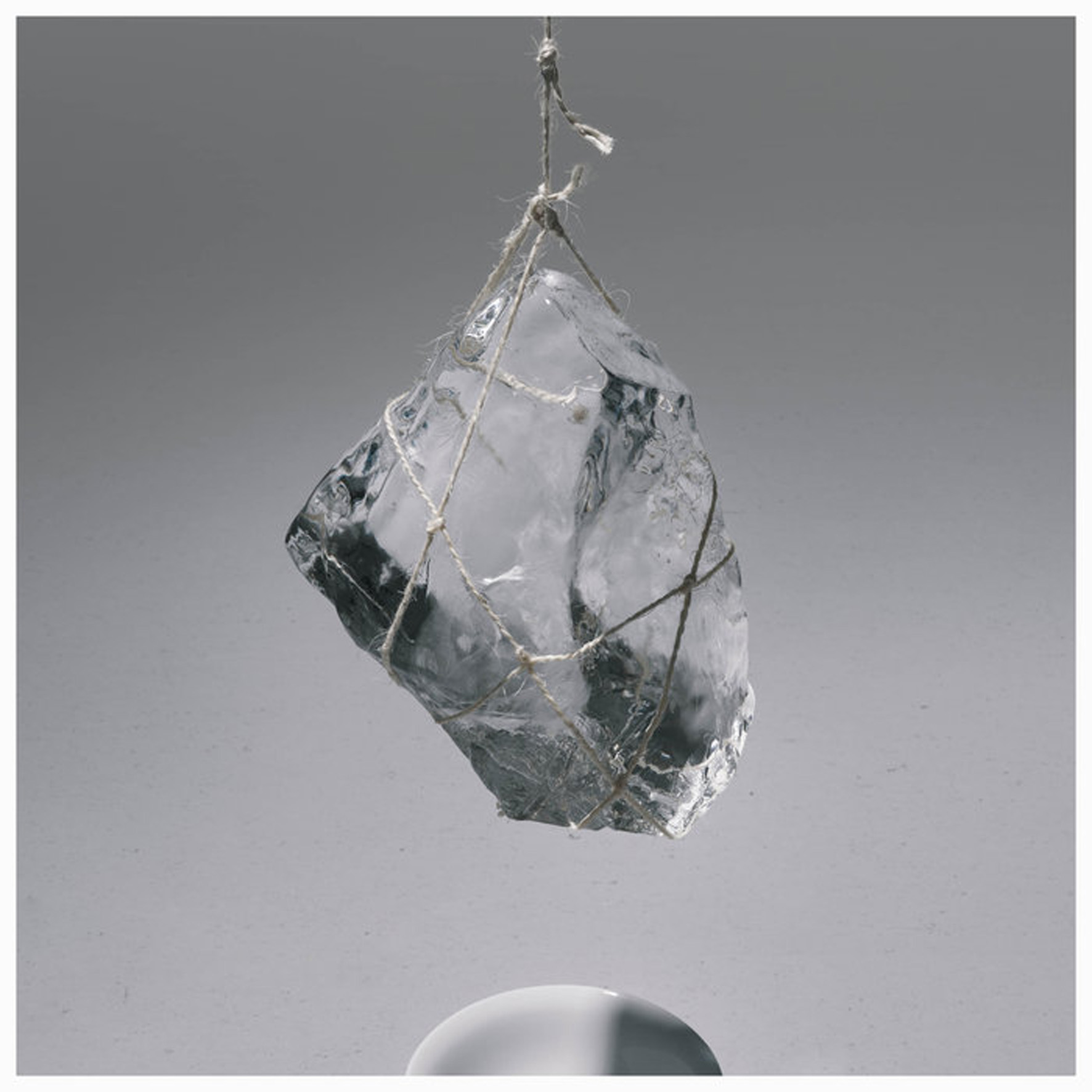 Although she has only released one full-length album before now, Paris-based artist Tomoko Sauvage has been making very strange and beautiful music for over a decade. The reason for that lean discography became instantly apparent when I watched video of one of her performances, as a mere recording cannot hope to capture the fascinating and ritual-like installation that makes her work so singular: Sauvage sits in a circle of ceramic bowls beneath ice blocks suspended from the ceiling by rope (each bowl mic'd with a hydrophone). As can be expected, there are plenty of slowly dripping and gently sloshing sounds to be found here, but Musique Hydromantique takes the idea of water-based sound art to a much deeper and more compelling extreme than I previously thought possible, manipulating subaquatic feedback and "singing bubbles" to wonderfully eerie and otherworldly effect.
Although she has only released one full-length album before now, Paris-based artist Tomoko Sauvage has been making very strange and beautiful music for over a decade. The reason for that lean discography became instantly apparent when I watched video of one of her performances, as a mere recording cannot hope to capture the fascinating and ritual-like installation that makes her work so singular: Sauvage sits in a circle of ceramic bowls beneath ice blocks suspended from the ceiling by rope (each bowl mic'd with a hydrophone). As can be expected, there are plenty of slowly dripping and gently sloshing sounds to be found here, but Musique Hydromantique takes the idea of water-based sound art to a much deeper and more compelling extreme than I previously thought possible, manipulating subaquatic feedback and "singing bubbles" to wonderfully eerie and otherworldly effect.
Tomoko Sauvage has unquestionably carved out a distinctive niche over the course of her career, as I cannot think of any other artists who could reasonably be described as "obsessed" with hydrophonic feedback, but her process has evolved quite a bit since her 2009 debut (Ombrophilia).This latest suite of pieces, for example, is considerably more naturalistic than Ombrophilia's studio compositions, as Sauvage recorded Hydromantique "live" with no electronic effects or editing.Normally, I do not care all that much whether someone performed something live, as I would rather hear something that sounds great rather than something "artistically pure" that could have been better if the artist had spent more time on it and used all of the tools at their disposal.In Sauvage's case, however, that distinction matters a great deal, as the machine-like noises in "Fortune Biscuit" become a dazzling feat of sonic sorcery rather than a mere nod to musique concrète/field recording.The secret lies in the aforementioned singing bubbles, which are apparently created by porous terra-cotta.It is worth noting that Sauvage's vision was initially triggered by a Jalatharangam performance by Aanayampatti Ganesan, which involves water-filled porcelain bowls of different pitches being struck (like a xylophone).After watching videos of both artists, the word "obsession" seems completely apt for Sauvage's approach, as the only real similarity is that she too fills bowls with differing water levels to make different pitches.Nearly everything else that Sauvage does is a radical innovation on an ancient art: amplifying the smallest sounds, focusing on what is happening under the water, employing chance as a compositional device, unveiling the secret sounds of ceramics, and working with random drips and layers of sustained tones rather than melodies.
Obviously, using a hydrophone to record water dripping into bowls results in an extremely constrained palette, but each of Hydromantique's three pieces has its own distinctive character (figuring out how to achieve that is probably another reason why Sauvage records so infrequently, I suspect).The opening "Clepsydra," for example, sounds like a woozy, slow-motion and impressionist recording of dripping stalactites and overlapping church bells (Sauvage gets deep, ringing tones by flicking the side of her bowls)."Fortune Biscuit," on the other hand, sounds like a roomful of malfunctioning sewing machines (or a crackling and indistinct shortwave radio transmission) beneath a shifting and ghostly feedback drone.As much as I enjoy the other pieces, "Fortune Biscuit" is the one that captures Sauvage at her most ingenious, harnessing and amplifying the strange and unique properties of "biscuit" (porous terra-cotta).Sauvage saves the best for last, however, as the epic 20-minute "Calligraphy" is easily the most hauntingly beautiful work on the album.Sauvage recorded the piece in an echo chamber located in a former factory and makes inspired use of the resultant reverberance and extended decay times.While there is an erratic backdrop of Sauvage’s usual deep bell-like tones and dripping water, "Calligraphy" is very much a drone piece primarily devoted to her beloved subaquatic feedback.Sauvage subtly manipulates the bowls' ringing tones by slowly dipping a fist-sized orb into the water, subtly altering the water level to create glissandi and something like vibrato.The overall effect is quite an eerie and supernatural-sounding one, as Sauvage's indistinct, whining tones overlap, intertwine, and slowly slide to weave fleeting dissonant harmonies.
Obviously, there are a few caveats with a release such as this, the most obvious being that Musique Hydromantique is unapologetically challenging sound art.Also, Sauvage's aesthetic is a quiet, understated, and slow-moving one.As such, these songs require significant patience and focused attention to fully enjoy.Also, an understanding of how the sounds are created is an essential part of the experience, as the process is the most compelling part of Sauvage's aesthetic.Her light touch, calm focus, devotion to chance, and reverently ceremonial performances makes it seem like these curious and magical sounds have always existed (just outside our threshold of hearing) and were patiently waiting millennia for an especially sensitive channeler to turn up and finally bring them to our attention.In some ways that is true, but there is also a great deal of intelligence and ego-less artistry in how they are harnessed and presented here.All of that adds up to a particularly rarefied and exquisite pleasure, particularly since iconoclastic new works by "serious" composers seem a bit rare these days (though Michael Gordon, Ellen Fullman and Eli Keszler spring immediately to mind).Musique Hydromantique is a work very much in the tradition of visionary folks like Alvin Lucier and La Monte Young: it is an album that only Sauvage could have made and it is hard to imagine anyone else taking this direction any further, yet this simple, pure, and meditative work is a beguiling self-contained world that reveals a wealth of intriguing new possibilities.
 
Read More
- Administrator
- Albums and Singles
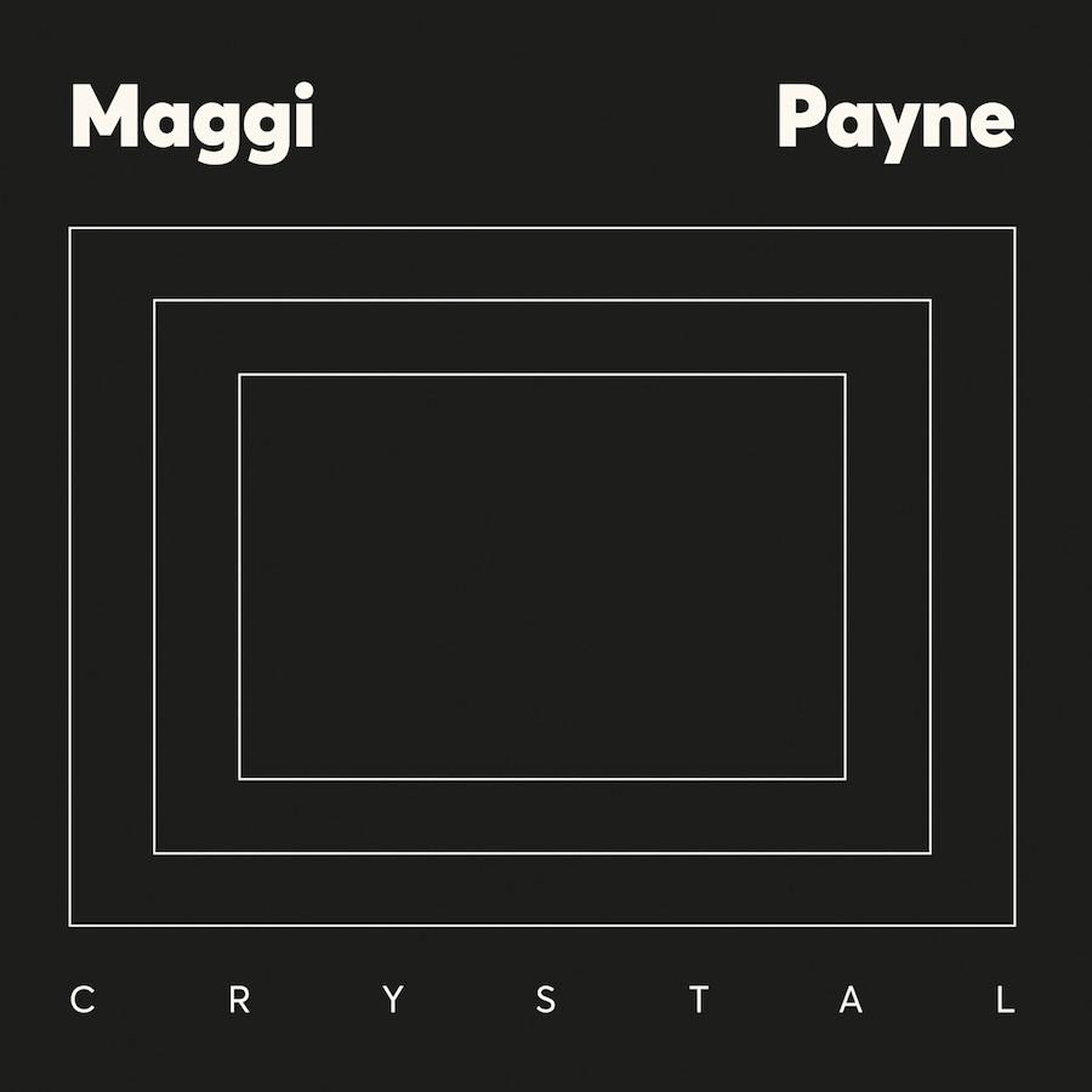 For good reason, it is usually a safe bet to assume that any newly reissued '80s obscurity entitled something like "Crystal" is going to be lazily pastoral New Age-y synth noodling. This album, originally released in 1986 on Lovely Music, is quite an unexpected and dramatic exception to that generalization though. Perversely, Payne uses roughly the same palette (flute, synth, voice) that one might expect for such serene fare, yet Crystal is a strikingly dark, heavy, and unnerving album from start to finish. I cannot say I have ever encountered anything else quite like it, which makes some sense given Payne's pedigree and general milieu (she is co-director of the famed Center for Contemporary Music at Mills College). The nearest human reference points are probably Gyorgy Ligeti or the films of Andrei Tarkovsky, but Crystal most closely resembles a deep plunge in howling cosmic horror or the endless void of space. Given its challenging and uncomfortable nature, it is easy to see why Payne's work is less well-known than that of her less menacing contemporaries Eliane Radigue and Pauline Oliveros, but her vision was certainly no less formidable.
For good reason, it is usually a safe bet to assume that any newly reissued '80s obscurity entitled something like "Crystal" is going to be lazily pastoral New Age-y synth noodling. This album, originally released in 1986 on Lovely Music, is quite an unexpected and dramatic exception to that generalization though. Perversely, Payne uses roughly the same palette (flute, synth, voice) that one might expect for such serene fare, yet Crystal is a strikingly dark, heavy, and unnerving album from start to finish. I cannot say I have ever encountered anything else quite like it, which makes some sense given Payne's pedigree and general milieu (she is co-director of the famed Center for Contemporary Music at Mills College). The nearest human reference points are probably Gyorgy Ligeti or the films of Andrei Tarkovsky, but Crystal most closely resembles a deep plunge in howling cosmic horror or the endless void of space. Given its challenging and uncomfortable nature, it is easy to see why Payne's work is less well-known than that of her less menacing contemporaries Eliane Radigue and Pauline Oliveros, but her vision was certainly no less formidable.
The opening "White Night" slowly fades into being in deceptively subdued fashion, slowly taking shape as a shivering and whining bed of drones with a dark and ominously pulsing undercurrent.That undercurrent soon eclipses everything else, however, and is further bolstered by a roaring hiss that gets louder and louder.Eventually, the engulfing maelstrom collapses to leave only a stuttering drum machine rhythm that leads into still more strange transformations.Some of there are more compelling than others, but Payne cycles through motifs a bit too quickly for my liking.If it were not for the sheer elemental force and the escalating heaviness of Payne’s slowly snowballing crescendos, I probably would not have lingered much beyond "White Night."I am grateful that I stuck around though, as the rest of Crystal is considerably more focused and plunges far beyond the territory that other space music luminaries like Lustmord and Steve Roach have exhausted.The following "Sirocco," for example, continues the deep space vibe of its predecessor, but takes it in far more of a Solaris direction: the massed howling voices make me feel like an abandoned astronaut damned to wander a haunted space station forever amidst a fantasia of dark, unwanted hallucinations.Again, however, Payne is very idiosyncratic with her structure: the engulfing cosmic horror periodically dissolves into oases of relative calm and lucidity.Those spells do not last for long, but they are very effective in paving the way for the next visceral plunge into lysergic darkness to make maximum impact.It is kind of an amazing piece, distilling pure horror and alienation into ten perfect minutes of reality and reason being ripped apart in particularly ugly and gnarled fashion.
The title piece opens the second side, slowly creeping into the picture as an unsettling series of undulating metallic whines that fitfully cohere into shrill harmonies.Beneath it all, a whooshing and frothing electronic thrum steadily escalates in power, gradually pushing everything else out and returning Crystal once more to the alienating enormity of the howling void.It is a bit more complex this time around though, resembling a slow-motion blizzard of roaring emptiness.Unexpectedly, however, a coda of warm, dreamily flanging synths blossoms up from the nothingness to end the piece with a few minutes of appropriately crystalline beauty.The album’s final piece ("Solar Wind") initially seems to maintain that fragile idyll, as a tender and understated swirl of ghostly, unsettling harmonies gradually becomes more twinkling and lovely, despite some persistently lingering shadows. Characteristically, however, all traces of prettiness are scoured away by a roiling surge of corrosive white noise…then silence.Slowly, an eerily shivering haze of queasy harmonies billows up to linger and undulate like a sickly fog for the remaining moments.It is evocative in an impressively ugly way, like I am given a glimpse of a lovely vista only to see if immediately napalmed, leaving only a sinister-looking sunset filtering through the thick smoke.
Unsurprisingly, Crystal is a hard album to love, as Payne weaves a very convincing and sustained nightmare of large-scale ineffable dread and oppressive darkness.There are admittedly some fleeting moments of light and beauty to be found as well, but they provide contrast more than they define Crystal's essence.Still, somewhat uneven opening aside, this is an album that genuinely inspires awe during its most visceral moments.Historically, it is impressive that Crystal predates the heyday of dark, deep space ambience by at least a decade, but it also feels significantly different in tone and scope than anything that followed.Albums like The Magnificent Void and The Place Where The Black Stars Hang feel like attempts to capture the feel of space's cold immensity.  Crystal, on the other hand, feels like Payne somehow made a field recording of an anguished inhuman howl that has been sweeping across time and space at unheard frequencies for millennia.That is quite a remarkable feat indeed and it makes for quite a harrowing listen, as Crystal's climaxes feel like I am being smothered by malign roaring entropy (I suspect that this is the most terrifying album ever recorded by a flautist).To some degree, the three decades that have passed since Crystal's release have blunted its impact a bit, as Payne's greatest gift was clearly sound design and music production technology has evolved a lot since 1986.In other respects, however, this is still quite a singular outing, as Payne's compositions have a very unusual and unpredictable structure full of pregnant silences, unnerving atmospheres, and roaring crescendos.It is that talent for striking dynamic shifts and ambiguously nightmarish ambiance that continues to make this a special and compelling album today.
 
 
Read More
- Administrator
- Albums and Singles
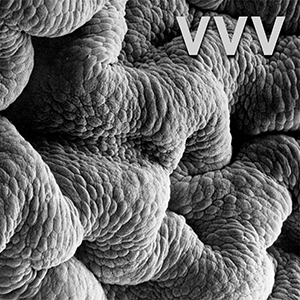 Shawhin Izaddoost, the man behind VVV, put out a mixtape entitled Why El Paso Sky earlier this year, and it was quite a teaser. Murky, ambient rhythms and catchy melodies appeared throughout, all wrapped in unique production that gave the cassette an identity all its own. He has followed it with Shadow World, a full-length record that is drawn from the same palette as the previous work, but with a stronger sense of cohesion and consistency to make for an engaging album from beginning to end.
Shawhin Izaddoost, the man behind VVV, put out a mixtape entitled Why El Paso Sky earlier this year, and it was quite a teaser. Murky, ambient rhythms and catchy melodies appeared throughout, all wrapped in unique production that gave the cassette an identity all its own. He has followed it with Shadow World, a full-length record that is drawn from the same palette as the previous work, but with a stronger sense of cohesion and consistency to make for an engaging album from beginning to end.
Across the nine pieces that make up Shadow World, Izaddoost's bread and butter of sparse beats and dark melodies abound, in such a way that straddles the line between experimental music and the dance floor."Give It Time" is a vaguely house-inspired bit of catchy rhythms, complete with female vocal samples and synth melodies, but it has so much more depth to it, surrounded by lush processing and rich ambience."Spellbound" is at first a mid-tempo piece of murky beats, but the dramatic synthesizers that underscore the bits of voice that are scattered throughout are also a standout.
Another defining element of Shadow World is Izaddoost's inclusion of traditional Iranian instruments, a nod to his own heritage.Swirling horns appear throughout the mix on "Fire Temple", making for a nice traditionalist counterpoint to the otherwise modern programming and electronics.His pairing of Middle Eastern percussion instruments with the mangled, sampled beats is another exceptionally well done touch.Traditional instrumentation can also be found on "Circuit", with horns drifting through an echoing space of pulsating synthesizers.
Izaddoost's skills as a producer are just as strong as a composer though, and one of my favorite aspects of Shadow World is the sound design itself.The entire album is buried in a crackling, vintage haze that never obscures the music he is making, but instead adds to it and provides a wonderful layer of depth."Fifth Ring" is heavily filtered with a bit of distortion, sounding almost as if the performance is coming from the middle of a rainstorm, but the gorgeous melodies are anything but obscured.For "Give It Time," the ghostly melodies are nicely blended into a rich, analog crackling ambience from beginning to end.
Some of the album’s strongest moments are saved for its closing pieces though.There is a greater sense of calm to "Reminder," with an overall pensive feel to the taut rhythms and glistening melodies.It may be calm, but Izaddoost keeps the mix fresh, adding and subtracting layers at all times to make for a peaceful, yet still extremely dynamic work.For the concluding "The Descent," he opts for a largely beatless space, instead placing the focus on frozen horns and cavernous spaces.There is a time-worn sensibility to the interlocking loops and layers, ending the album on a pretty, but abstract note.
It is hard to determine which is the strongest part of VVV’s latest album, because while the melodies and beats are compelling, it is very difficult to overlook the depth given to these songs by Shawhin Izaddoost’s production.Everything is just so elegantly presented in an ambient wash that adds a brilliant depth to the actual music being presented.Thankfully though, there is no real need to pick a favorite part, and instead I just enjoyed Shadow World for what it is: a uniquely complex, multifaceted record of ambient dance music.
samples:
 
Read More
- Administrator
- Albums and Singles
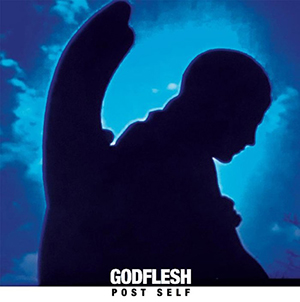 The second full length album since Godflesh's 2010 reformation, Post Self seemingly came out of nowhere, with little of the anticipation or hype that surrounded 2014's A World Lit Only By Fire. As someone who follows Justin Broadrick on all forms of social media, I personally only heard of it due to a preorder email from an online store. My first listen to it ended up defying the expectations which I had, based on the post-reform work I have heard from the duo. I suppose that that is exactly what a great Godflesh album should do, and Post Self manages to defy very, very well.
The second full length album since Godflesh's 2010 reformation, Post Self seemingly came out of nowhere, with little of the anticipation or hype that surrounded 2014's A World Lit Only By Fire. As someone who follows Justin Broadrick on all forms of social media, I personally only heard of it due to a preorder email from an online store. My first listen to it ended up defying the expectations which I had, based on the post-reform work I have heard from the duo. I suppose that that is exactly what a great Godflesh album should do, and Post Self manages to defy very, very well.
In my review of A World Lit Only By Fire I stated that it was the first "true" Godflesh record in nearly two decades:no hip-hop flirtations, no electronica, no live drummers (as defined Songs of Love and Hate, Us and Them, and Hymns, respectively).It was just a seething mass of growling vocals, Benny Green’s subterranean bass chug, programmed rhythms, and Broadrick’s trademark barely controlled guitar.Which made sense, given Broadrick had essentially compartmentalized his go-to styles:melodic, pop tendencies were locked into Jesu and electronic experimentation became JK Flesh, leaving Godflesh the outlet for pure industrial-tinged metal.On Post Self though, these demarcations have blurred, and that is a very good thing.
It is not obvious from the onset, however.The big riffs of "Post Self" are very much inline with Godflesh sensibilities as of late, though the distorted drums and heavy vocal processing herald what is to come later in the record.The same goes for "Parasite," on which the duo refocuses more on rhythms than riffs with Broadrick's vocals less processed and more purely guttural.By the time "No Body" arrives, the differences from the album’s predecessor become difficult to ignore.The overall structure and rhythms have a more electronic feel to them, while everything else is caked in distortion and processing.
Broadrick has always cited Killing Joke and other artists from the post-punk era as major influences on his work, and that feels apparent on "Mirror of Finite Light."The song features much of the same bassy, electronic-heavy rhythms as the remainder of the album, but in a more complex mix and a slower tempo. In this case, the vocals have that flat, disconnected quality that is so familiar from that era, allowed to echo around the mix erratically, coming across almost as a lost Factory band blackened by years of heavy metal.
Some of the songs of Post Self stray even farther from what we have come to expect from Godflesh."The Cyclic End" blends a more expansive, ambient guitar sound with digital beats, crawling along but more of a textural work, and Broadrick breaking out a tiny bit of his inner Robert Fripp.With a lush arrangement and more singing, rather than growled vocals, it is a standout on an already strong album.The duo even break out what sounds like a vocoder for the vocals on the lumbering "Mortality Sorrow," considering how indecipherable much of the vocals are on the album, this is even another step further to inhumanity.
Album closer "The Infinite End" is one of the most trademark Godflesh moments to be had, largely for the fact it captures that end-album gloomy, dirgey sound that has been prevalent throughout the band’s nearly three decade discography.The snappy rhythms are offset by the lugubrious tempo, awash in synthesizers with heavy processing to Broadrick"s voice, distorted but not growled.Ending on a depressing note has been a staple for years (e.g. "Don't Bring Me Flowers," "Live to Lose," and "Forgive Our Fathers"), and it remains appropriate here.
While it is not hard to see that the noisy electronics of JK Flesh have invaded Post Self, the underlying feel of many of these songs are actually rather catchy and pop-tinged in nature, drawing from what has become the Jesu sound.Superficially that may seem anything but the case, but structurally, these songs are all are far more memorable then metal riff fests or purely noisy electronic outbursts.To be honest, the closest parallel I feel is with 1999’s Us and Them album, one that may not be a favorite among everyone, but I have always felt to be a lost Godflesh classic.Just as Slavestate was such a left turn from Streetcleaner and Us and Them is sandwiched in between the more metallic Songs of Love and Hate and Hymns, Post Self is Broadrick and Green’s statement that even after reforming, predictability is not something that applies to Godflesh, nor will it ever.
samples:
 
Read More
- Administrator
- Albums and Singles
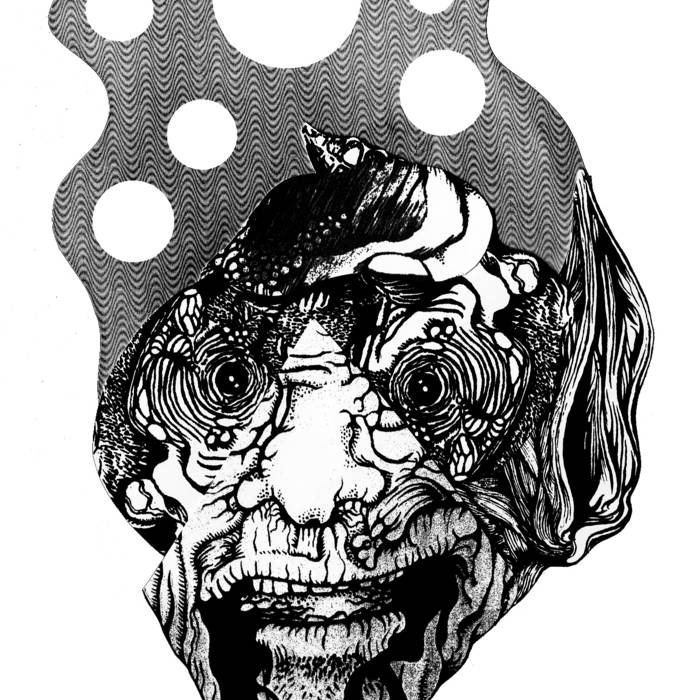 It's perhaps coincidence that Rob Hayler’s most recent tape release has coincided with the recent disassembly, and retiring, of his legendarily No Audience Underground Midwich alias. A single piece, assembled from source material from fellow UK Noise / drone player Ian Watson, Metronome is a blurred cut and mix of smudged digital / analogue tin and tape wreckage.
It's perhaps coincidence that Rob Hayler’s most recent tape release has coincided with the recent disassembly, and retiring, of his legendarily No Audience Underground Midwich alias. A single piece, assembled from source material from fellow UK Noise / drone player Ian Watson, Metronome is a blurred cut and mix of smudged digital / analogue tin and tape wreckage.
 
Passing over the questions of ownership, design, purpose and who-did-what-with-what-intent, this duo's collaboration has a familiarly discordant and heavy sense of Nurse With Wound throughout—but without the mischievous sense of exploration. Multiple manipulated mantelpiece clocks bob and float under washes of digital scrub, Watson’s coppery sources cast into and submerged in and out of a layer of burning acid wash. The spine of the piece is a selection of lopsided loops that could have once been patterns, but whatever they once were they've now been anvil coaxed out of shape like hobnail wearing bent-backed and chained wraiths. The atmosphere is negative one, the cold of clang and clamor giving Metronome a digital brittleness. Hayler's woozy orbit sets the sound's heads dipping in and out of the aforementioned scald, the metronome swept from its clock like tick into a lapping of ugly tidal washes.
As a shorter soundscape, Metronome may have had scope for a possible bleak beauty but at nearly 44 minutes long this is stretched a little too far. Without enough variation, and too many familiar aural phrases welded from a relatively narrow palette, the final third of Metronome can feel more of a climb than a journey.
samples:
Read More
- Administrator
- Albums and Singles
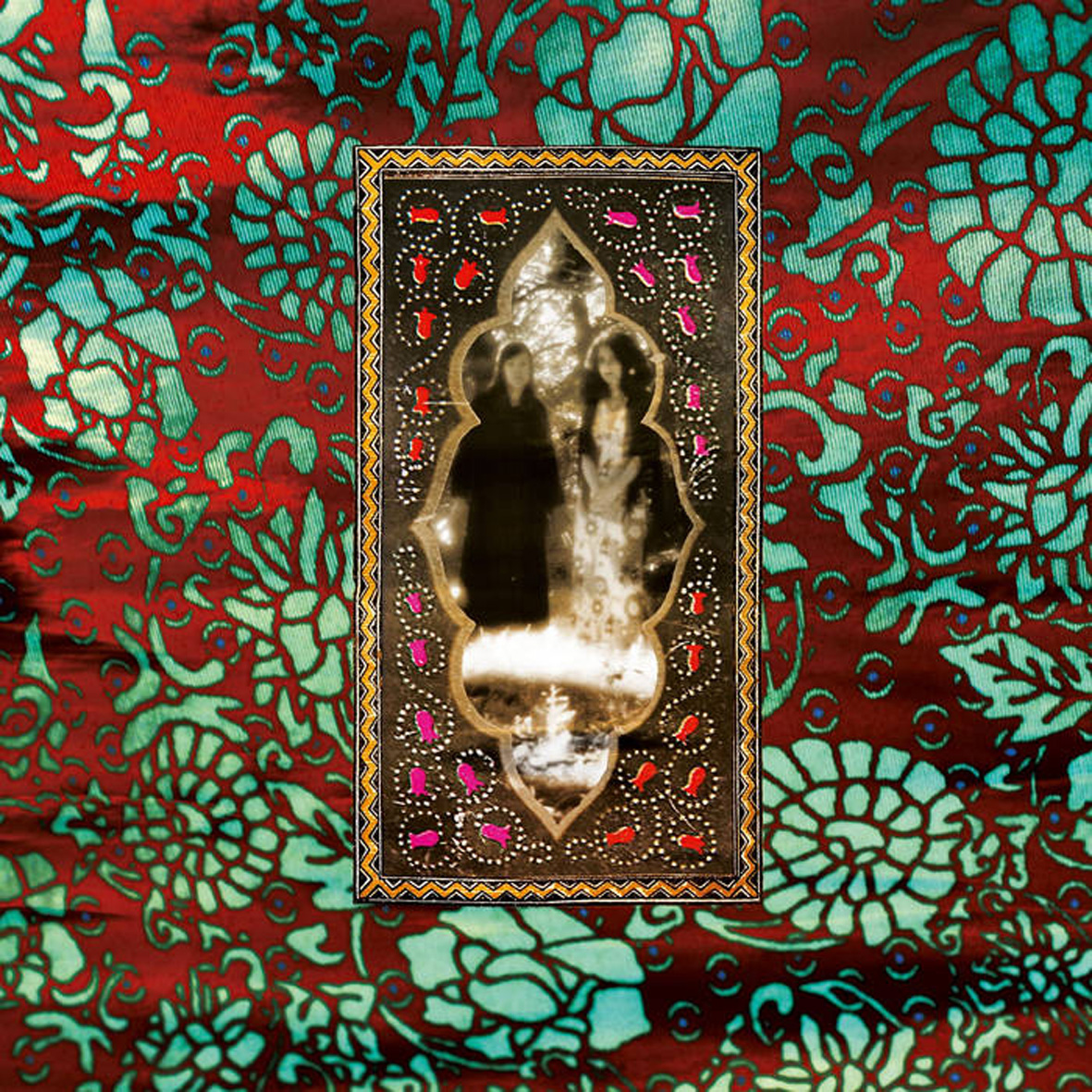 Curiously, this visionary and otherwordly collaboration between Fursaxa's Tara Burke and Espers' Helena Espvall was only released this year despite being recorded roughly seven years ago. That is quite a shame, as Tourmaline might have had an enthusiastic reception if it had come out during freak folk's brief day in the sun. Then again, maybe not, as this album goes even farther out than Burke's already deeply outré solo records. In any case, Tourmaline is a wonderful album, as it feels a lot like like experiencing a series of unsettling supernatural events in the darkest depths of a thick forest at night. If I did not know anything about the album's provenance, I would have guessed that it was a lost private press obscurity by an artist that either went mad, wandered into the desert, or vanished under mysterious circumstances soon after the recording was complete (i.e. exactly the sort of thing that I am drawn to like a moth).
Curiously, this visionary and otherwordly collaboration between Fursaxa's Tara Burke and Espers' Helena Espvall was only released this year despite being recorded roughly seven years ago. That is quite a shame, as Tourmaline might have had an enthusiastic reception if it had come out during freak folk's brief day in the sun. Then again, maybe not, as this album goes even farther out than Burke's already deeply outré solo records. In any case, Tourmaline is a wonderful album, as it feels a lot like like experiencing a series of unsettling supernatural events in the darkest depths of a thick forest at night. If I did not know anything about the album's provenance, I would have guessed that it was a lost private press obscurity by an artist that either went mad, wandered into the desert, or vanished under mysterious circumstances soon after the recording was complete (i.e. exactly the sort of thing that I am drawn to like a moth).
The opening piece, "Catharus," deceptively borrows its name from a species of thrush despite being totally unlike any earthly birdsong that I am aware of.Instead, "Catharus" is built upon a swirling mass of eerie whistles that feels unnervingly like a haunting chorus of frogs intent on some sort of occult and potentially malevolent business.That surreal and shifting atmosphere is the most intriguing part of the song, but Burke and Espvall weave some ghostly intertwined Siren-esque vocals over the top to beckon me further into the album.Actual instruments make their first appearance on the following "Spirea of Ulmaria," which is essentially a gnarled and tormented-sounding violin (or cello) solo prone to occasional sharp harmonics and flurries of demonic chromaticism.It still feels deeply unreal and unsettling though, as it takes place over a backdrop that seems like some kind of wood flute being used to mimic warbling and fluttering calls of night birds.The "bird calls" have a very strange and hollow texture though, which subtly furthers the feeling that something is not right.The lengthy "Mabon" closes out the first side of the album and it is the first of Tourmaline's two legitimately mesmerizing centerpieces.It opens as a roiling and distorted drone piece that churns and swells like a My Bloody Valentine-style shoegaze roar, but Espvall's cello soon takes the piece in an even more viscerally snarling, howling, and cathartic direction.There are some chant-like vocals too, which lend the piece a suitably ritualistic atmosphere, but the real appeal of the piece lies in how Anahita transform drone into something far more physical, wild, and possessed-sounding.Espvall's strings sound completely psychotic at times and it is absolutely wonderful.The final moments are especially beautiful, as actual notes are abandoned for an eerie cascade of metallic harmonics.
Anahita's dark spell continues to beguile with the similarly lengthy "Nascent Wings" that kicks off the album's second half.Unexpectedly, it is more of a vocal-centric piece than anything previously found on Tourmaline, but the underlying music is no less inventive and disturbed-sounding.For one, Espvall's cello is especially menacingly this time around, unpredictably swooping and seething behind the moaning and howling vocals.There are also some brief flourishes of spacey, lysergic electronics that beautifully add to the sense that reality has become hopelessly blurred and I am now getting a full-on glimpse of a flickering and vibrant spirit world of faeries, nymphs, and ghosts.I was especially struck by how seamlessly "Nascent Wings" can shift from nightmarish to heavenly, elevating dreamlike unreality into something even more complex, layered, and mercurial.The closing epic "A Tapestry to Weave" is yet another drone piece in structure, but one with a haze of ghostly voices swirling around vaporously.There are also some faint bells, adding to the already convincing illusion that I have stumbled upon a coven or a black mass while lost in the woods at night.As usual, however, Burke and Espvall have a striking set piece of sorts lurking up their collective sleeve, as "Tapestry" unexpectedly transforms into a rather lovely, melodic, and bittersweet cello performance at the midpoint, tenderly moaning and churning amidst a bleary haze of half-spectral/half-angelic vocals.
If Tourmaline were a somewhat more conventional album, I would probably grumble a bit about how it would have been better if it were less amorphous and improvisatory sounding, but Anahita's illusion is perfect from the first notes to the last.If someone told me that Burke and Espvall were not actually psych musicians from Philadelphia, but were actually twins who were raised in a remote tundra by a pack of wolves and a kindly warlock, I would probably accept it as a fairly credible claim.In fact, I keep wanting to describe this album as "Lovecraftian," as it so perfectly distills the feel of an enchanted wood that all of the villagers avoid because ancient witches and druids are always trying to reawaken slumbering arcane gods and forest spirits.Such a comparison, while colorful, is a disservice though, as Tourmaline is more sophisticated, sensuous, and darkly passionate than Lovecraft's works of pure imagination (also, there would have been no women in Lovecraft's version). Regardless, this album feels like the veil of reality just suddenly dissolved and plunged me in the middle of a dark fairy tale tinged with supernatural horror.As such, it is quite a remarkable and otherworldly achievement (I am not at all fond of reality).Admittedly, it is hard to imagine an album as bizarre and challenging as this one connecting with very many people, but that is not Anahita's fault–people just need to have better taste.Hopefully, Tourmaline will find its way to those of us receptive to its timeless "forest necromancy" aesthetic, as it will likely make a deep impression on anyone drawn to the immersive, temporally dislocated visions of fellow fringe-dwellers like Natural Snow Buildings (or Burke's own work as Fursaxa).
 
Read More
- Administrator
- Albums and Singles
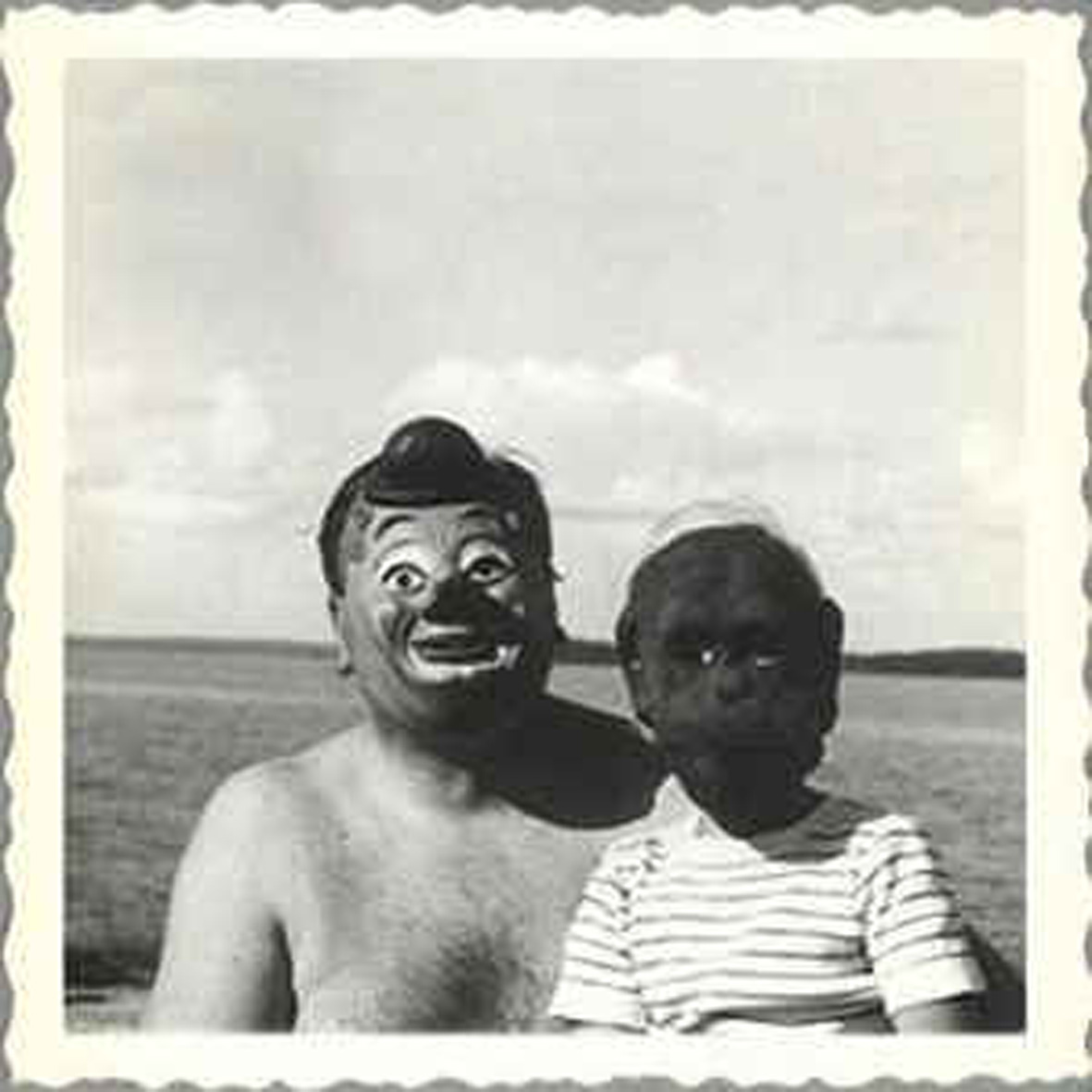 Given how much I have been enjoying Timo von Luijk's recent collaborations with Andrew Chalk, it seemed like a perfect time to dig into some of his strange and underheard solo albums, most of which were released on his own Le Scie Dorée imprint. Murrille, von Luijk’s debut as Af Ursin, was originally released back in 2002, but was later remastered and reissued by Robot Records. While the album’s description references some fairly apt touchstones like "early krautrock" and the more experimental side of France’s Futura label, Murrille is mostly an uncategorizably unique and idiosyncratic affair, resembling field recordings of a remote cargo cult trying to mimic jazz using rusted found instruments.
Given how much I have been enjoying Timo von Luijk's recent collaborations with Andrew Chalk, it seemed like a perfect time to dig into some of his strange and underheard solo albums, most of which were released on his own Le Scie Dorée imprint. Murrille, von Luijk’s debut as Af Ursin, was originally released back in 2002, but was later remastered and reissued by Robot Records. While the album’s description references some fairly apt touchstones like "early krautrock" and the more experimental side of France’s Futura label, Murrille is mostly an uncategorizably unique and idiosyncratic affair, resembling field recordings of a remote cargo cult trying to mimic jazz using rusted found instruments.
Timo van Luijk is the sort of artist that somehow manages to stand out as being especially unpredictable and eccentric even within experimental music circles, as I have become increasingly less able to describe his aesthetic as I hear more and more of his work.Also, he seems to make a good amount of curious and counter-intuitive decisions.One such decision, for example, was opening his debut album with a piece like "Matinal," which slowly fades in with arbitrary-sounding ride cymbals, strange scrapes, and a stuttering thicket of violins.Once it gets completely rolling, it is quite likable, but it takes a long slow fade to get there.Also, the bottom completely drops out soon after that point, plunging the piece into a weirdly cavernous soundscape of reverbent drips, bizarre metallic plinking, and something that sounds like an agitated monkey armed with a microphone and some effects pedals.It is hard to imagine a more quixotic and wrong-footing way to commence a solo career, as "Matinal" sounds like an ethnographic forgery for its first few minutes, then becomes a very different sound collage that sounds like a field recording of a rain forest teleported into a deep cave.The following piece, "Secret Belly" is similarly perplexing and disorienting, sounding like someone distractedly crooning alone in yet another cave while a broken music box fitfully plays through a wah-wah pedal.It is not bad or anything, but it is willfully childlike and indulgent–the appeal is primarily that it is just puzzling and alien.Promisingly, the following "Paean" is a bit more structured, resembling some kind of weird and erratic Sun City Girls-style percussion jam, yet the instruments still share space with moaning wordless chants and crunching footsteps.
Given the amorphous and understated tone of the first half of the album, the considerably more vibrant and melodic second half comes as quite a pleasant surprise."Astral Twist" is the first unambiguously wonderful piece on the album, blurring together an eerie vocal loop, rolling hand percussion, strange whines, and something that sounds like a strangled tuba.It kind of evokes some kind of lurching and ramshackle pagan funeral parade and van Luijk uncharacteristically allows it all unfold naturally, accumulating some welcome power and momentum.By the end, it resembles a wild free-jazz session accompanied by a didgeridoo and a menacing groundswell of visceral non-musical textures that ultimately rip the piece apart like a black hole.Remarkably, it continues to linger around after that, making me feel like I am being engulfed in a giant compactor filled with crunching chunks of sharp, rusted metal."Bitter Suite" is even better still, unfolding as a strange and clanking metallic groove with a weirdly haunting melody of ringing, out-of-tune-sounding strings.Eventually, that structure falls away, but the piece then turns into appealingly evocative and carnivalesque collage of mumbled singing and broken melodies.It feels like a bizarre dream where I am being serenaded by a clown, but someone had pulled the hapless clown’s hat down over his face, thus hopelessly muffling his song.The final piece on the Robot reissue is a bit of an interesting surprise, as the original album’s "Loquacious" is replaced by a piece from a later CDr (2003's 2me Fascicule).I have never heard the excised song, but the inclusion of "It's Raining Clouds" seems to have been an inspired move, as it beautifully continues the winning trend of unusual percussive grooves and gnarled squalls of free-jazz brass.It sounds like what I imagine a recording of Terry Riley jamming with street musicians in India might be like.
Taken only on its own and devoid of its context within van Luijk’s larger oeuvre, Murrille feels like the work of an artist who was partly in the thrall of his iconoclastic, noise-adjacent contemporaries like Organum and Small Cruel Party, yet had some rather original ideas of his own to share as well.If I had been hip enough to know about Af Ursin back in 2002, I probably would have liked the more abstract, "musique concrète" bits quite a lot.With the benefit of hindsight, however, it is definitely the imaginary traditional/international music that makes Murrille a significant release.Given that aesthetic dichotomy, it is admittedly a bit of a flawed and uneven album, resembling a split release from two different artists rather than a thematically coherent whole (particularly when the quizzical sequencing in factored in).That said, it is hard to complain when van Luijk is so distinctive and inventive with each facet.In a perfect world, Murrille would be two separate EPs and I would be able to say that the "ethnographic forgery" one is a perfect, if modest, gem of junkyard percussion, faux-ethnic appropriations, and mangled jazz.Instead, I will merely say that Murrille is a likable early release that features a handful of inspired moments and flashes of brilliance that enigmatically foreshadow what was to come.
 
Read More

